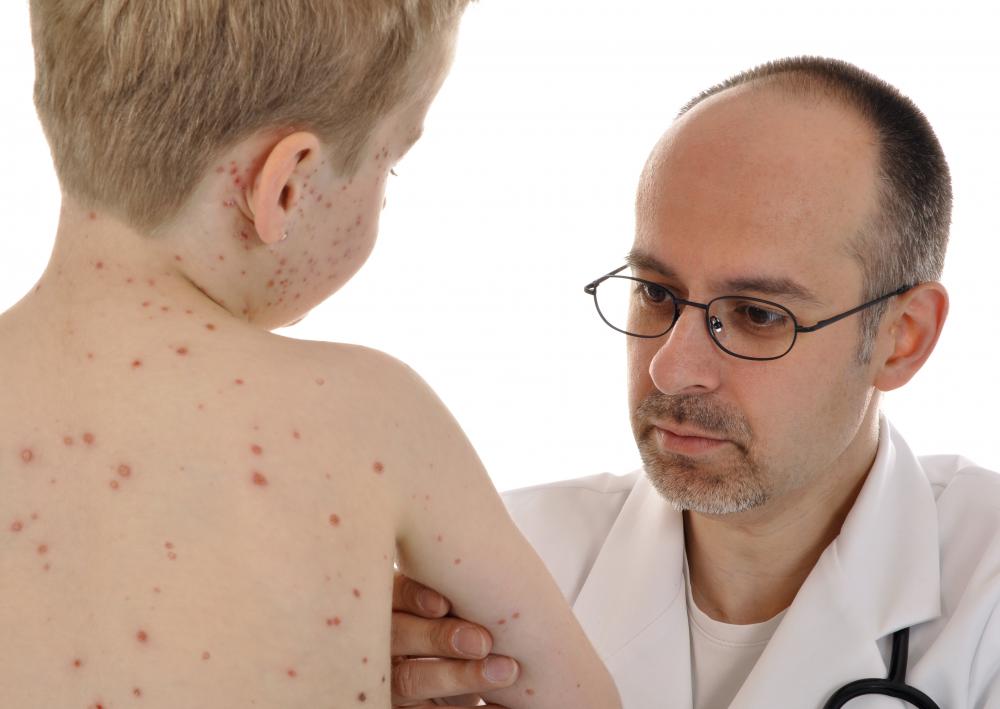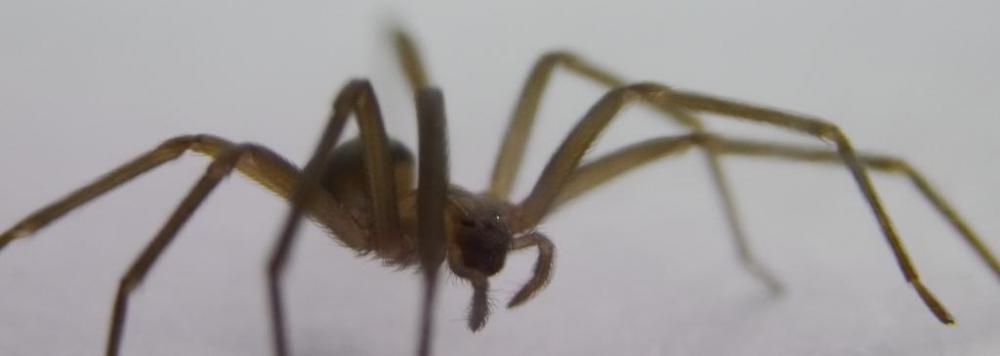At TheHealthBoard, we're committed to delivering accurate, trustworthy information. Our expert-authored content is rigorously fact-checked and sourced from credible authorities. Discover how we uphold the highest standards in providing you with reliable knowledge.
What Causes Baby Blisters?
Skin irritation or trauma accompanying allergies or diaper rash may cause blisters on babies. Local and systemic bacterial or viral infections associated with chicken pox, cold sores, or impetigo commonly produce visible symptoms involving fluid filled vesicles. Mite or spider bites may produce irritation and subsequent blistering. Epidermolysis bullosa, a genetic disorder, affects the microscopic skin structures, producing blisters. Treatment depends on the size, extent, and location of the lesions along with underlying causative factors.
Systemic or topical allergies generally trigger an immune response, alerting the body to release chemicals and white blood cells to the antigen invasion location. This battle between the allergen and the body often causes itching, which precipitates rubbing or scratching. The continuous skin irritation can disrupt the internal skin structures connecting the epidermis and the dermis, resulting in fluid being trapped between the skin layers. Eating certain foods or coming into direct contact with chemicals or substances may produce an allergic reaction causing baby blisters.

Treatment usually involves eliminating the food or external factor causing the reaction. Health care providers may prescribe topical or oral antihistamines that reduce internal responses. Open blisters present an opportunity for infection and require protection with bandages or ointments. Baby skin is typically thinner than that of older children and adults, making it more prone to damage with excessive sun exposure. Health care providers generally advise that parents apply protective lotions with a high sun protection factor (SPF) to prevent the possibility of burns and baby blisters.

Cold and chicken pox viruses commonly travel to the skin’s surface producing baby blisters. Physicians may suggest topical ointments to minimize the discomfort associated with the eruptions. Babies may also require antiviral medications, especially when chicken pox causes internal lesions. The blistering generally heals naturally, however, as the virus runs its course. In these instances, not only can opening blisters pose a risk of secondary infection, it can also transmit the virus to other people, so hand washing and hygiene are important.

Staphylococcus and Streptococcus infections often produce blistering on the face. Known as impetigo, baby blisters may develop around the mouth or nose. These blisters typically tend to erupt leaving a crusty, honey-colored scab. Left untreated, the area may become larger or spread the infection to other regions. Physicians may prescribe oral or topical antibiotics to eliminate the bacteria that cause the infection.
Skin irritation often occurs when individuals become infected with the human itch mite, commonly called scabies. The insect burrows under the skin, leaving a curved or linear tract. The irritation produced may cause rubbing or scratching and eventually blisters. Treatment involves prescription lotions or ointments that kill the organism. Infestation usually also requires disinfectant procedures around the home.
Brown recluse or black widow spider bites may produce baby blisters, as the venom attacks and eventually kills skin cells. Patients typically experience discomfort and pain at the location of the bite along with redness and swelling. Babies may develop systemic reactions that include fever, nausea, and weakness. Immediate first aid measures include ice applications. Treatment is generally based on the symptoms and complications that arise.
Epidermolysis bullosa is a genetic disorder that weakens the collagen or keratin fibers in the skin, producing baby blisters. Lesions may be localized to one specific area or appear on the palms of the hands and soles of the feet. Some types of the disorder also cause generalized blistering both externally and internally. Babies typically have no signs of infection or exhibit symptoms other than blistering. Treatment generally depends on the extent and severity of the condition but usually only requires good skin care.
AS FEATURED ON:
AS FEATURED ON:













Discuss this Article
Post your comments